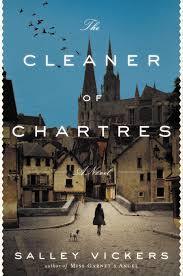Sandra Gulland's Blog, page 21
October 10, 2013
A lovely new novel from Salley Vickers, The Cleaner of Chartres, and foretelling the future with The Game of Hope
When I was asked by Penguin US if I would be interested in reading Salley Vickers’ new novel, The Cleaner of Chartres, of course I said yes. I’d read Miss Garnet’s Angel by her, and enjoyed it very much.
The Cleaner of Chartres is more unusual, more challenging in structure, but has something of the same charmingly old-fashioned feel to it. (I kept thinking Balzac.) I both loved this novel and struggled with it, and in the end I adored it.
The novel unfolds in the present (in Chartres, France), and in various other French cities in the past (Evreux, Rouen, Le Mans), revealing by stages the life of one woman, Agnes, the cleaner of the title.
Agnes is an able if mysterious young woman with a talent for sorting and cleaning, a vocation that pulls her into the messy lives of a number of people—and, in the process, complicates her own.
There are mysteries throughout: I won’t spoil it for you by revealing what these are, but suffice it to say that in coming to Chartres, Agnes is trying to escape a troubling past.
This is a gentle novel, peopled with charming eccentrics. Vickers is a polished writer with a charming sense of humour: I love the texture of her prose. My one reservation (and the cause of the struggle mentioned above) is that since there are a number of different characters in each city, I had to keep notes on who was where. A cast of characters would have helped, and a map would have been a pleasant addition as well.
I was especially delighted with the Afterword, where Vickers explains what happened to some of her fictional characters. As if—and yes, I do believe it so—they all went on living. A lovely touch.
“Realism with a subtle fairytale quality,” said the Publishers Weekly reviewer, and that captures it perfectly. Vickers is a wonderful novelist.

Life update: I’m preparing for Canadian Thanksgiving—a big event here!—and for heading to our winter home in San Miguel de Allende, Mexico, not long after. (See my last blog post on what that entails.)
The last draft of the Hortense Young Adult is tucked away until early November. In the meantime, in the early creative hours, I’m giving some thought to the premise, tag and log lines, using the guidelines from a worthwhile 3-session on-line course on “Rapid Story Development,” using, among other things, Enneagrams, a method for analyzing character.
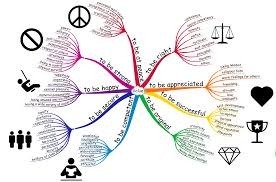
Enneagrams are complex, but intriguing: I do love learning systems. Simply framing a premise with the help of the class guidelines has helped me see how the story needs to be changed.
Another thing I’m studying right now is the Lenormand method of foretelling the future—a type of Tarot which is surprisingly popular.
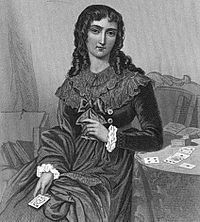
Madame Lenormand was a contemporary of Josephine Bonaparte; in fact, she lived close to Josephine’s delightfully eccentric aunt Fanny. Lenormand was famous for her accurate predictions; she exploited and enhanced her fame by becoming a prodigious writer and publisher on matters occult, as well of a faux memoir of Josephine (a “memoir” that has always intrigued me).
Madame Lenormand is unlikely to be a character in my Hortense novels, but her card-fortunetelling method might well be. In any case, I’m enjoying exploring the cards.
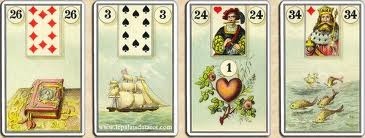
At some point, “playing” the cards was called The Game of Hope, my current working title—and one I rather like.
October 9, 2013
The chaos of departure: a snow bird’s lament
Every spring and every fall my husband and I make the journey to our “other” home: north to Ontario in the spring, and south to San Miguel de Allende, Mexico, in the fall.

It’s not an easy move for a historical novelist, not easy wrapping up an office and trying to anticipate what reference books I will need in the months ahead.
This fall my move is additionally complicated by having two works-in-progress in two different eras: THE SHADOW QUEEN (set in the 17th century court of the Sun King) and my first Young Adult novel about Hortense (set in the Napoleonic era).

I don’t like returning to an office still in chaos, so I make an effort to sort things out before I leave. This usually means taking care of things I’ve been putting off, and the big “No, not yet” chore I hadn’t faced this summer was sorting out my books.
The shelves of my little office have been filled to capacity with books on the Court of the Sun King and 17th century life for almost a decade. I needed to find room for my stacks of books on Hortense and her world (other than on the floor), and so all day yesterday I hauled books from one place to another. The ping-pong table room is now well stocked with biographies on Sun Court characters, another basement room cleared of the remnants of my Napoleonic book collection, and the floors of my office are almost clear. (Wow.)
Here are my shelves devoted to Hortense:

And here are the books I’ve yet to find a place for:

(Sigh. Back to work.)
September 30, 2013
Ira Glass on storytelling
Are you a fan of Ira Glass’s THIS AMERICAN LIFE podcast? I am.
He’s great on story-telling and creativity. Here’s one. He kind of says it all!
September 8, 2013
Author interview with the amazing Caroline Leavitt
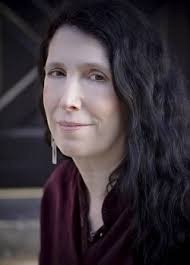
I’ve known Caroline Leavitt for almost as long as the Net has existed (i.e. rather a long time now), but I’ve only met her once or twice. I first knew her on-line through a wonderful Readerville.com writers’ chat group. (Oh, those days!) I read her blog, follow her on Twitter and Facebook, and read her essays and novels.
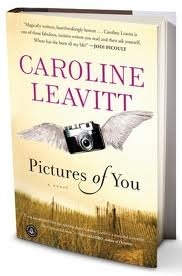
She has been a persevering literary writer, and with that went the word struggling, so it has been particularly pleasing to see how her last two novels—Pictures of You and Is This Tomorrow—have been such huge hits. And for three reasons, IMO: 1) she’s a fantastic writer, 2) she’s a pro, ready to step up to the plate, and 3) she’s now with Algonquin, a great publisher.
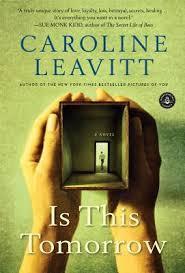
I just read and loved her latest novel, Is This Tomorrow. Caroline has a flawless way of creating real characters and building dramatic tension. This was a novel I didn’t want to put down, that I thought about when I was away from it. As a writer, I longed to know about her process: how does she do it? I’m thrilled that she’s here to answer my questions!
Your novels are compellingly plotted and beautifully developed. How do you do it? What’s your process?
Oh, thank you! John Truby Story structure. I was always one of those writers who followed my muse and I ended up with 800 pages that I had to wade through to find the story. I hated most structure classes. The 3-act deal was like a prison. The rest seemed moronic. But then a UCLA student of mine told me about Truby, how he’s a Yale PhD who studied stories and came up with a kind of system for what all the best ones have–moral choices, reversals, reveals, self-revelations. It made sense to me. It seemed to create a deeper, more nuanced story, and the first time I “trubyized” a novel, I had a NYT bestseller! The first time I trubyized a script, I made the finals at Sundance Screenwriters Lab.
So I map things out in detail right from the start, and end up with a 30-40 page synopsis. Of course it changes as I write, because of discoveries, changes, etc. But the basic spine is the same. It gives you tremendous creativity for discovery, too!
I’ve become an intense plotter, as well, and I’m excited by the process. I recall that you introduced me to your relative’s hypnosis tapes, which I loved. Now I see that you’re experimenting with binaural beats, which sounds similar. Is this part of your writing process? Tell me more!
It is, actually. Binaural beats supposedly recreate the neuron firing of the brain and help you concentrate, get creative, even relieve tinnitus. Do they work or do I just think they work? I don’t know, but does it matter if there are results? I keep one on for creativity and it seems to work. But it might be the placebo effect. (And again, who cares?!)
I’ll be trying that! I was pleased to see mention of several Readervillians in your acknowledgements. Do you use reader/editors, and, if so, at what point in the writing process?
Oh, I absolutely do. I change a lot of them with each book, but right now I am totally dependent on three people. One I show my structural stuff to and he is a great help because that’s what he does–structure work. And I have two writer friends who read the novel chapter by chapter. And I miss Readerville!
I was interested to also note that you used researchers for this novel. (I recall a blog you wrote some time ago of a youth who volunteered.) This is something I’ve considered. How does that work?
I had to hire someone because I was spending whole weeks trying to find out what 1950s cops used instead of crime tape (sawhorses and rope!) So I hired two high school interns who were adorable, but not as helpful as I needed. Not their fault. They were learning. I next hired a pro, a librarian, who was amazing. Not only did she find me exactly what I needed, including a rare journal for male nursing in the 1960s, but she would add in things that she thought might be interesting for me–and they always were!
The best research tool? Facebook. I posted that I needed to talk to someone who had been a cop in the 1950s, or a male nurse, or a pie baker–and I was flooded with people. I called them up and I got the most amazing personal stories! Plus, it was so much fun. I’m doing that now for my next novel, Cruel Beautiful World (out in 2015 from Algonquin Books), which is set in the 1970s.
Another beautiful title. Your stories seem perfect for film-adaptation, and I know you have a film background. Are they under option? Development? I know, too, that you’re a Truby fan (as I am). What wisdoms from the film-realm have you brought to novel writing?
Oh Hollywood, it breaks my heart into shards. I’ve had lots of options. Meeting Rozzy Halfway was optioned by Paramount and dropped in a strike. Into Thin Air was optioned by two producers and Madonna was interested in making it her directorial debut for three days until she went on tour. Then one producer fell in love with the other and it all fell apart. Living Other Lives was optioned by this guy who did all of Stephen King’s early films. It had a script by Obie winner Tina Howe. And then suddenly, everyone vanished! I had a deal at Sundance for Pictures of You, and then the actress who wanted to direct and star got an offer from HBO for a series and that was that. I currently have an option for an essay I wrote in New York magazine and there’s lots of interest for Is This Tomorrow, but lots of interest doesn’t mean I am sewing sequins on my dress for the Oscars any time soon.
I so wanted to take control, I learned how to write script and got that Sundance finalist shot, but again, that doesn’t really mean anything. So much is luck and timing. I’m very superstitious and I lay out tarot card spells to make this happen!
I love that! You blog often, publish an excellent novel every few years (you have another one scheduled for 2015!), are active on social media and have a life. How do you do it?
I am obsessive compulsive, and that isn’t a good thing, actually. I am always doing fifty things at once, and I have this keen sense that time is limited (maybe because I was critically ill in the 90s for a year and not expected to survive, but I did!) and I have to make things happen as fast as I can. I wish I could relax!
What one thing would you say is key to (surviving) a writing life?
I have more than one!
Never. Ever. Ever. Give. Up.
Support other writers. It’s good karma.
Write every day.
Don’t write to the market because it will kill your art. Write the book you need to read.
Thank you for these amazing questions!
Thank you so much, Caroline! ???
Readers: be sure to read Caroline’s novels, explore her charming website Leavitttown, follow her on Twitter and Facebook. She’s the best!
September 1, 2013
My latest newsletter …
I’ve just sent out a newsletter, and already I’ve heard from some amazing people.
Please share the link to Facebook, Twitter etc.if you are at all inclined.
August 18, 2013
How to be published: everything you need to know, plus a really great surprise

The HarperCollins Canada 2014 catalogue!
The main reason for this post is to share a great blog post on writing and publishing.
“25 steps to being a traditionally published author: Lazy Bastard Edition”—a post by Delilah S. Dawson—is an excellent overview of the writing and publishing process, as good an overview as I’ve ever read. I just sent the link to four friends who are working on novels. (Heh. By mistake I typed “wording” on novels.)
To give you the funny-but-hard-hitting sense of it, Step #1 is: If you’re actually lazy, GTFO.
Amen.
On the home front:
THE SHADOW QUEEN has a pub. date: April 8, 2014. I’ve sent off the corrected 1st Pass pages and I’ve only the Acknowledgements and the very last sentences of the novel to tweak. I’ve a storage box on my office floor where everything to do with The Shadow goes now, labelled “archival.” (I.e. my crowded basement.)
No more surprises, right?
Wrong! Yesterday evening, I got this Tweet:
@Sandra_Gulland it’s Claude. I wasn’t sure if you came across this. http://t.co/svwdofnDVo— Christine Wright (@mllechristine1)
I was speechless! A portrait of my Claude? I didn’t think one existed. (Google for it: you won’t find it.)

Look familiar?


I’ve emailed Doubleday to find out if they used the portrait as a basis for the cover.
I was pleased when I first saw the cover because the woman looked like how I’d imagined Claude to look. (Eyebrows!)
And now: well! To find out that it looks like the real Claude: I’m blown away.
August 12, 2013
Inspirations when needed
I’ve just come from a stimulating writers’ group meeting (of three). Annie Dillard’s book, The Writing Life, came up.
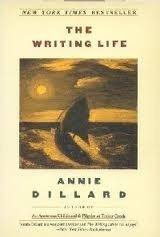
Now, home, I’m checking my email (but of course), and indulging in reading BrainPicking’s newsletter. It’s often a feast, but especially so this issue, especially the essay on Dillard’s book.
Quakers have a saying about something that “speaks to your condition.” I’m approaching the final chapter of the WIP, and this book speaks to mine.
(Don’t you love that Dillard’s first name is Annie?)
July 28, 2013
Yay! A “tenner” for Jane
I’m thrilled that the UK is gracing their “tenner” with a portrait of Jane Austen. [Shocking and upsetting update: the young woman who spearheaded this is being massively harassed by threats of rape on Twitter. As in 50 an hour. Sign the petition to get Twitter to make it easier to report abuse.]

I’m coming to think of this as my Jane Austen summer. In addition to a biography and books about Jane Austen, I just finished reading every word of the massively annotated Harvard edition of Pride & Prejudice.

Immediately I ordered a second, Persuasion.

It’s hard to express what a delight these massive editions are. This video gives you a sense of the richness of it:
For me, as a researcher, the scholarly annotations provide a wealth of fascinating information into the daily life of the period.
In short: heaven.

Update: I’m slowing reading (and correcting) the “first pass” of THE SHADOW QUEEN: that is, the typeset script. I have to say: it’s a pleasure. I’m pleased.
I believe I’ve showed the cover before. I love it more and more:
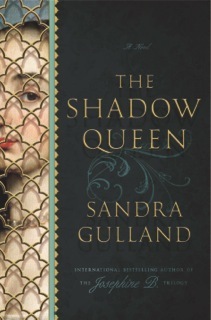
I’m also daily writing the YA about Hortense de Beauharnais, Josephine’s daughter. I’m at 40,000 words now, about half-way.
In a few days I’m heading to the Napoleonic Congress in Toronto to give a talk on the documentary about Josephine.
And then back home to sport with friends and family. Happy summer, everyone!

July 25, 2013
Want a glam writer’s life? Throw glitter on your computer.
My very dear friend and wonderful writer Merilyn Simonds sent me this today:

Too true!

I’ve been sticking to the 1000-words-a-day diet on my first YA, but now the “First Pass” galleys for THE SHADOW QUEEN have arrived. It will take time to read each page, checking for errors, so I’m going to cut back to 500.
I’m also slowly assembling a treadmill. It’s a good thing I passed IKEA 101 (and rather enjoy the process). It’s right outside my office door: I see myself going from one treadmill to another. ;-)
July 17, 2013
I’ve fallen in love … with THE SHADOW QUEEN book cover
Yesterday I was send an email from Melissa Danaczko, my editor at Doubleday US, with the subject line “cover!” I paused for more than a moment, praying, I confess! “Please, let it be wonderful.”
I had every reason to trust that Melissa—and her team—would produce a wonderful cover, but I’ve experienced a few nasty shocks over the years: a cover showing my blonde heroine with jet-black hair, another of a young woman with her bodice ripped. (No, I do not write bodice-rippers!)
Finally, I opened it, and I am absolutely enchanted:
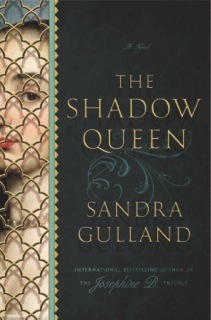
The plan is to emboss the type and screen with gold, which will make it really lush.
Space is left open at the top for a blurb—and I’ve already had some wonderful ones, which I will publish here next.
The interior design is lush, as well:

Each chapter opens with a baroque letter design.
Don’t you just love it?

